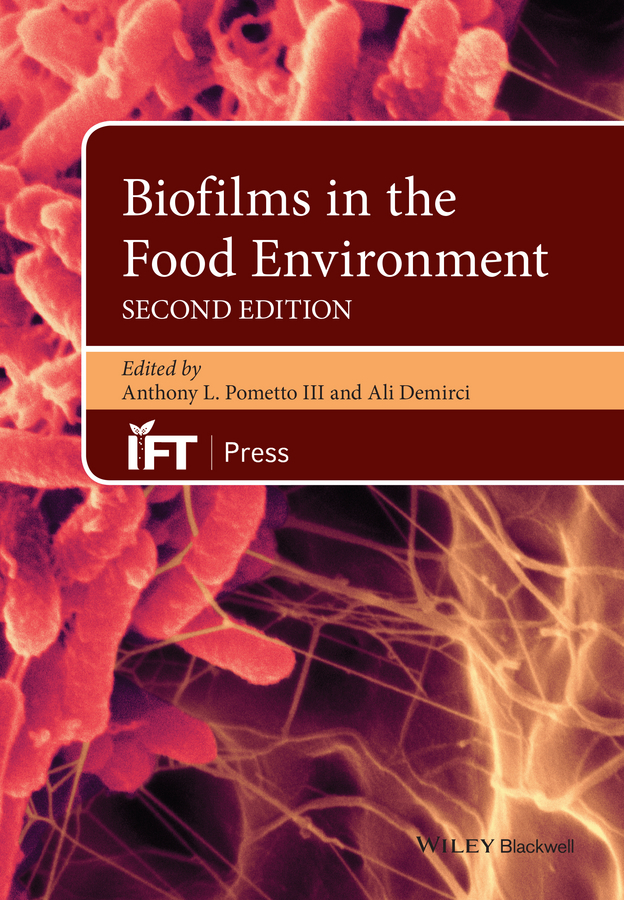Электронная книга: Ali Demirci «Biofilms in the Food Environment»

|
In nature, microorganisms are generally found attached to surfaces as biofilms such as dust, insects, plants, animals and rocks, rather than suspended in solution. Once a biofilm is developed, other microorganisms are free to attach and benefit from this microbial community. The food industry, which has a rich supply of nutrients, solid surfaces, and raw materials constantly entering and moving through the facility, is an ideal environment for biofilm development, which can potentially protect food pathogens from sanitizers and result in the spread of foodborne illness. Biofilms in the Food Environment is designed to provide researchers in academia, federal research labs, and industry with an understanding of the impact, control, and hurdles of biofilms in the food environment. Key to biofilm control is an understanding of its development. The goal of this 2nd edition is to expand and complement the topics presented in the original book. Readers will find: The first comprehensive review of biofilm development by Campylobacter jejuni An up-date on the resistance of Listeria monocytogenes to sanitizing agents, which continues to be a major concern to the food industry An account of biofilms associated with various food groups such as dairy, meat, vegetables and fruit is of global concern A description of two novel methods to control biofilms in the food environment: bio-nanoparticle technology and bacteriophage Biofilms are not always a problem: sometimes they even desirable. In the human gut they are essential to our survival and provide access to some key nutrients from the food we consume. The authors provide up-date information on the use of biofilms for the production of value-added products via microbial fermentations. Biofilms cannot be ignored when addressing a foodborne outbreak. All the authors for each chapter are experts in their field of research. The Editors? hope is that this second edition will provide the bases and understanding for much needed future research in the critical area of ?Biofilm in Food Environment?. Издательство: "John Wiley&Sons Limited"
ISBN: 9781118864067 электронная книга Купить за 15440.38 руб и скачать на Litres |
Другие книги схожей тематики:
| Автор | Книга | Описание | Год | Цена | Тип книги |
|---|
См. также в других словарях:
Food web — A freshwater aquatic and terrestrial food web. A food web (or food cycle) depicts feeding connections (what eats what) in an ecological community. Ecologists can broadly lump all life forms into one of two categories called trophic levels: 1) the … Wikipedia
Archaea — Archea redirects here. For the geologic eon, see Archean. For the spider family, see Archaeidae. Archaea Temporal range: Paleoarchean – Recent Halobacteria sp. strain NRC 1, each cell about 5 μm long … Wikipedia
Археи — Halobacteria, штамм NRC 1, каждая клетка около 5 мкм длиной … Википедия
Archaea — Saltar a navegación, búsqueda ? Archaea Rango fósil: Arcaico Holoceno Halobacteria sp. cepa NRC 1, cada … Wikipedia Español
Sewage treatment — The objective of sewage treatment is to produce a disposable effluent without causing harm to the surrounding environment, and also prevent pollution.[1] Sewage treatment, or domestic wastewater treatment, is the process of removing contaminants… … Wikipedia
Microbial mat — A microbial mat is a multi layered sheet of micro organisms, mainly bacteria and archaea. Microbial mats grow at interfaces between different types of material, mostly on submerged or moist surfaces but a few survive in deserts.[1] They colonize… … Wikipedia
